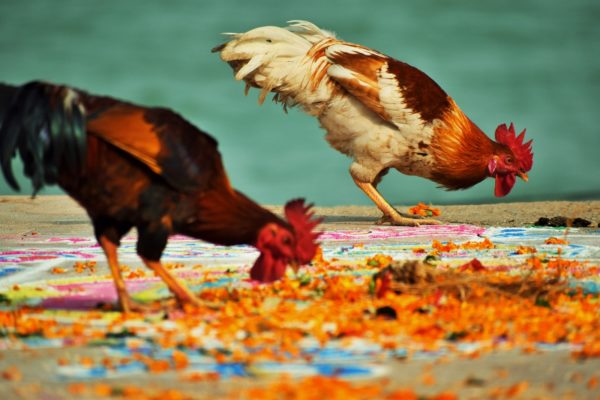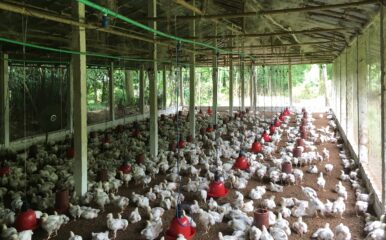
Antimicrobial resistance in Indian poultry: cause, concern and measure
Published on 14/11/2019

Anirudh Bharat/pexels
In the past four decades, the Indian poultry industry has seen a paradigm shift as it has moved from mere backyard activities into major commercial ventures. It is one of the fastest-growing segments of the agriculture sector in India today.
While the production of agriculture crops has been rising at a rate of 1.5-2% a year, the production of eggs and chickens bred and raised specifically for meat – otherwise known as broilers – has been rising at 8-10%. According to the Agricultural and Processed Food Products Export Development Authority (APEDA), India is the third-largest egg producer after China and the US, and the fourth-largest chicken producer after China, Brazil and the US.

This poultry industry growth brings benefits for both the Indian economy and nutritional security. However, it has brought with it a major public and environmental health challenge: the development of antimicrobial resistance (AMR).
Antibiotics in agriculture
These days, poultry meat in India is produced through integrated farming systems (which include crop production, livestock, poultry, fisheries and beekeeping) or semi-integrated farming systems (including poultry-fish integrated farming). In these systems, antibiotics are used for various purposes, including feed as growth promoters.
It is this growing use of antibiotics that has resulted in increased concern over the development of AMR in the poultry system – and over consumption of antibiotics in animals raised for meat is linked to an increase in antibiotic resistant infections not only in animals but also in humans and in the environment.
The Indian poultry industry is far from alone in contributing to the challenge of AMR. With increasing population growth and urbanisation, the pressure for food security is increasing on animal and agriculture food sectors globally and has resulted in over-usage of antibiotics in these sectors globally, though especially in low- and middle-income countries (LMICs). According to a study in Science, AMR in animals has increased by 50% in the past two decades against a typical approval cycle of new antibiotics which could be about several years.
The progress of AMR is a major global concern and if not addressed, could lead to a world in which the antibiotics which we use in human healthcare would no longer be effective, thus, taking us back to an age in which people died from simple infections.
AMR is of particular concern in developing nations, including India, where the burden of infectious disease is high and healthcare spending is low. According to the World Health Organization (WHO), India has among the highest bacterial disease burden in the world. Antibiotics, therefore, have a critical role in limiting death and disease in the country.
Tackling AMR
The challenges to tackling AMR are great. Systematic documentation of the spread of AMR in the poultry production and distribution system in India is sporadic, small and localised. Given that there are few regulations against the use of antibiotics for non-therapeutic purposes, with no stringent implementation protocols even when there are regulations, the emergence of AMR from antibiotic overuse in the animal sector is likely to be an unmeasured burden here.
This creates an urgent need for developing a systematic approach for documenting the AMR spread in poultry and its implications on the environment.
Following the Global Action Plan on AMR launched in 2015, India’s National Action Plan (NAP) for AMR was released in April 2017 by the Union Ministry of Health and Family Welfare. The first of six strategic priorities outlined in the NAP is to improve awareness and understanding of AMR through effective communication, education and training at ground level.
India has also launched the ‘National programme on the containment of antimicrobial resistance’ under the aegis of the National Centre for Disease Control (NCDC). The objectives of this programme are to establish a laboratory-based AMR surveillance system of 30 network laboratories, generating quality data on AMR for pathogens of public health importance; to strengthen infection control guidelines and practices, and promote rational use of antibiotics; and to generate awareness about the use of antibiotics in both healthcare providers and in the community.
One Health approach
Such public health challenges as AMR require large collaborative networks and the involvement of cross-sectoral stakeholders to demonstrate actionable policy planning and measurable outcomes. In early 2019, the Indian Government launched its One Health initiative, with an inter-sectoral approach to tackling some of the world’s most urgent health threats including brucellosis, tuberculosis, anthrax and AMR.
The One Health Poultry Hub in India will explore how rapid expansion of poultry production is linked with other challenges such as AMR and zoonoses. It will also help to identify key factors in the poultry production and distribution network for assessing AMR risk and possible policy suggestions to address these. This will reduce the risk of zoonotic diseases spreading from poultry to people, thereby mitigating the risk associated with the poultry network.
Educating individuals for responsible use of antimicrobials is a key societal and a cross-cultural challenge, and it needs to be addressed through both global commitment and local action.
As the verse from Mahaupanishad – an ancient Indian scripture – states: “the earth is family” (Vasudhaiva Kutumbakam).
Today’s One Health approach is entirely in tune with this ancient understanding; that all living beings exist as one global family. It is our duty to make the world a better and safer place to live, not only for humans but also for animals and our environment.


